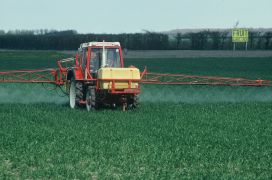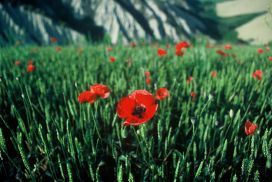| Both sides previous revisionPrevious revisionNext revision | Previous revisionNext revisionBoth sides next revision |
| capri:concept [2018/07/03 10:23] – gocht | capri:concept [2018/07/03 10:25] – gocht |
|---|
| <HTML> | <HTML> |
| |
| <div id="content"><!-- Start Inhalt --> | <div id="content"><!-- Start Inhalt --> |
| |
| |
| |
| <div class=rightwindow> | <div class=rightwindow> |
| |
| |
| |
| |
| |
| |
| |
| <H1>Concept</H1> | <H1>Concept</H1> |
| |
| |
| |
| |
| |
| <P>CAPRI is a partial equilibrium model for the agricultural sector developed for policy impact assessment | <P>CAPRI is a partial equilibrium model for the agricultural sector developed for policy impact assessment |
| |
| which differ in parametrization. Cover completely EU agriculture (280 regional models or 1.900 farm type models) <A HREF='https://www.capri-model.org/dokuwiki/doku.php?id=capri:concept:supply'> read more ..</A></P></LI> | which differ in parametrization. Cover completely EU agriculture (280 regional models or 1.900 farm type models) <A HREF='https://www.capri-model.org/dokuwiki/doku.php?id=capri:concept:supply'> read more ..</A></P></LI> |
| |
| <LI><P><B>Market module:</B> global spatial multi-commodity Model. <A HREF=regMarket.htm>28 trade blocks and 60 countries</A>. | <LI><P><B>Market module:</B> global spatial multi-commodity Model. <A HREF='https://www.capri-model.org/dokuwiki/doku.php?id=capri:concept:regMarket'>28 trade blocks and 60 countries</A>. |
| |
| Flexible and well-behaved functional forms. Armington assumption to model bi-lateral trade flows. | Flexible and well-behaved functional forms. Armington assumption to model bi-lateral trade flows. |
| match of feeding requirements of national herds</P></LI> | match of feeding requirements of national herds</P></LI> |
| |
| <LI><P>Welfare analysis, rich set of <A HREF="econind.htm">economic</A> and <A HREF="envind.htm">environmental</A> indiactors</P></LI> | <LI><P>Welfare analysis, rich set of <A HREF="https://www.capri-model.org/dokuwiki/doku.php?id=capri:concept:econind">economic</A> and <A HREF="https://www.capri-model.org/dokuwiki/doku.php?id=capri:concept:envind">environmental</A> indiactors</P></LI> |
| |
| </UL> | </UL> |
| <UL> | <UL> |
| |
| <LI><P><A HREF=spatDown.htm>Spatial downscaling</A> of crop shares, yields, stocking densities, fertilizer application rates to 150.000 | <LI><P><A HREF="https://www.capri-model.org/dokuwiki/doku.php?id=capri:concept:spatDown">Spatial downscaling</A> of crop shares, yields, stocking densities, fertilizer application rates to 150.000 |
| |
| Homogenous Soil Mapping Units (cluster of 1x1 km grid cells) for EU27 and link to bio-physical model DNDC</P></LI> | Homogenous Soil Mapping Units (cluster of 1x1 km grid cells) for EU27 and link to bio-physical model DNDC</P></LI> |


